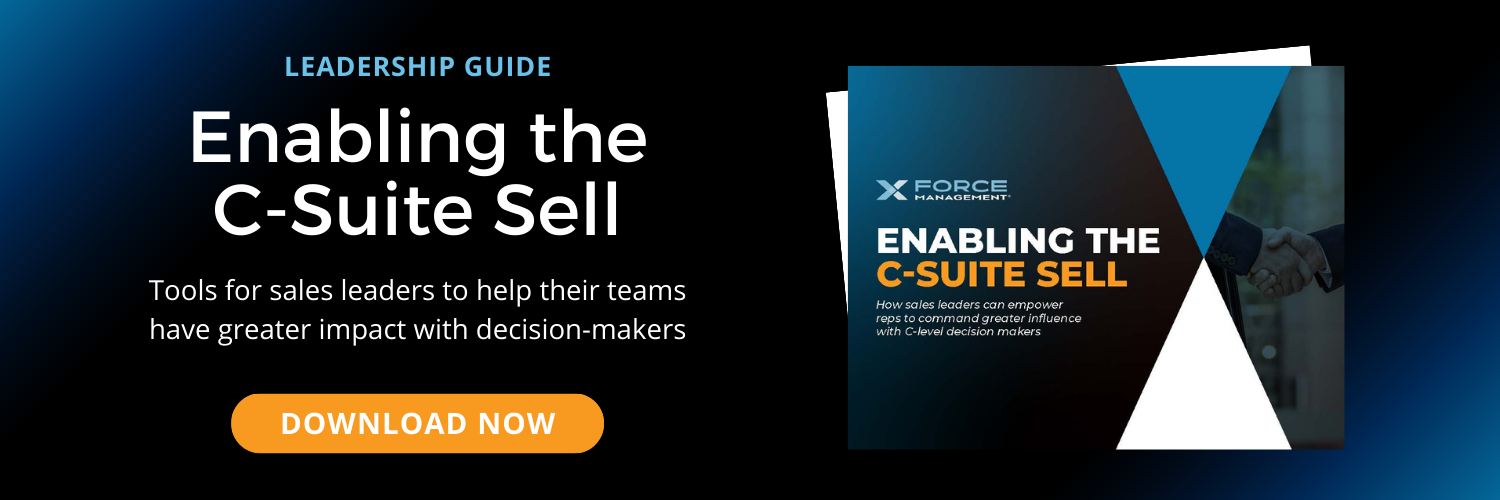
Six Questions to Test Your Prospect's Decision Process
Categories: Sales Process
The buying committee is changing. The average buying committee is now between 8 and 10 decision-makers. This means the sales process is more complex than ever, and ongoing budget concerns add another layer of challenges for your sales team. When you're putting time and resources into sales cycles that last an entire quarter or much longer, the last thing you want is for an unexpected requirement, budget allocation or a last-minute stakeholder interjection to throw a wrench in your plan and stall or kill your deal.
High-performing sales teams understand that the key to closing more deals lies in executing deep discovery and qualification to ensure alignment with the buyer’s process. Sellers that are able to navigate these complexities can leverage that understanding to anticipate obstacles and effectively drive the process to completion.
We discussed strategies for deep discovery, multithreading and driving urgency to win with the modern buying committee in our recent panel discussion with top sales leaders. Check it out if you're looking for more insight on how top sales teams are winning in our current environment.
Here are six questions to help your team members gauge the strength of an opportunity:
1. What steps are included in the customer’s decision process?
Take the time to understand how many stakeholders are involved in the process, who they each are, and when they will each become involved in the process. What are the key concerns for each stakeholder, and what questions will they ask? What obstacles might they each introduce? As a seller, you need to know the people who will be part of the buying decision and be audible-ready to articulate how your solution can impact their component of the business. We refer to this skill as relationship mapping, and it's one of the most critical competencies of sales teams who succeed in today's environment. Consider a discovery-enabling tool like Opportunity Manager, which can help your team track members of the buyer organization and their priorities to identify gaps in the deal.
2. Have I documented all the activities involved in validating and approving the solution?
Once you understand the steps involved, identify the activities and communications necessary at each stage to address key concerns, validate your solution, and win approval from the relevant stakeholders. When you move through multiple decision-makers in your buying organization, you need to determine the positive business outcomes, the required capabilities, and the metrics that are important to each buyer. Approach each decision-maker as a new discovery opportunity. Are the required capabilities, and metrics others indicated in previous conversations, just as important to this particular decision maker? If not, you need to determine and understand the discrepancy.
3. Have I developed a reverse timeline accounting for all events, responsible parties & dependent activities? Do I know who could alter this timeline?
Determining the customer’s buying time frame will help provide the benchmarks you need to move forward. Start with the desired outcome and then work backwards, accounting for all possible stakeholders and gatekeepers in the deal. Ensure that you have clearly outlined what each stage will look like, who will own the actions, and what is required to keep the deal moving through each step.
4. Are both my customer and myself vested in this timeline?
Is your customer looking to make a decision this year? This quarter? Has funding been allocated to the project? The last thing you want is to spend all quarter on a deal that just doesn't have budget behind it. Determining the time frame and then identifying next steps will help you either move the deal forward or put it aside to concentrate on more ready-to-act customers. You can certainly influence the customer's timeline by creating urgency for your solution, but sometimes it's just not going to happen within the quarter. It's important to qualify thoroughly on a realistic timeline so you can focus on the right opportunities.
5. Have I reviewed these timelines with my Champion, the Economic Buyer, finance, purchasing and/or anyone who could veto a decision that favors you?
When you have multiple decision-makers, it's critical you are not only validating the PBOs, Required Capabilities and Metrics, but also the overall timeline. Don't just ask for validation; seek out the places where you could run into problems and get challenged. This will help prevent surprises along the sales process and stop deals from getting stalled.
6. Who can change the process? Who is controlling the process?
Remember, understanding the people involved in the buying process will help you understand who can change the process and who ultimately will make the final decision. Understanding the players, who influences them, and what their priorities are will help you continually create and capture value for the customer in your sales conversations.
Simply following a structured sales process doesn’t guarantee the deal will close. You need to have a solid understanding of who can change or control process. Make sure your team is consistently qualifying all opportunities with a validated qualification process. It’s a sure way to prove an opportunity warrants your investment of time and resources.
Get to Top Decision-Makers
Enabling an entire sales team to consistently land meetings with the C-suite is a challenge, but enabling specific skills and habits can help. We created a guide with strategies to get your sales team identifying, influencing, and selling to top decision-makers in your buyer organization. Download Enabling the C-Suite Sell and get started leveling up your sales team's revenue potential.




